
Take-Aways:
Breadth metrics were mixed over the past week. There has been some improvement in the new highs/lows data on the NYSE, while long-term trend data was weaker across most U.S. markets. Additionally, Advance/Decline Lines mostly remain below their respective 50-day moving averages. Bulls need to see sustained improvement in these breadth metrics to have confidence that rallies will have staying power.
NYSE Breadth
The NYSE Advance/Decline Line remains below its 50-day moving average, in a similar position to the S&P 500. The fact that the moving averages are rising is a change of character from what we have seen for most of the year, but bulls need to see these metrics hold above them to have more confidence in equity rallies.
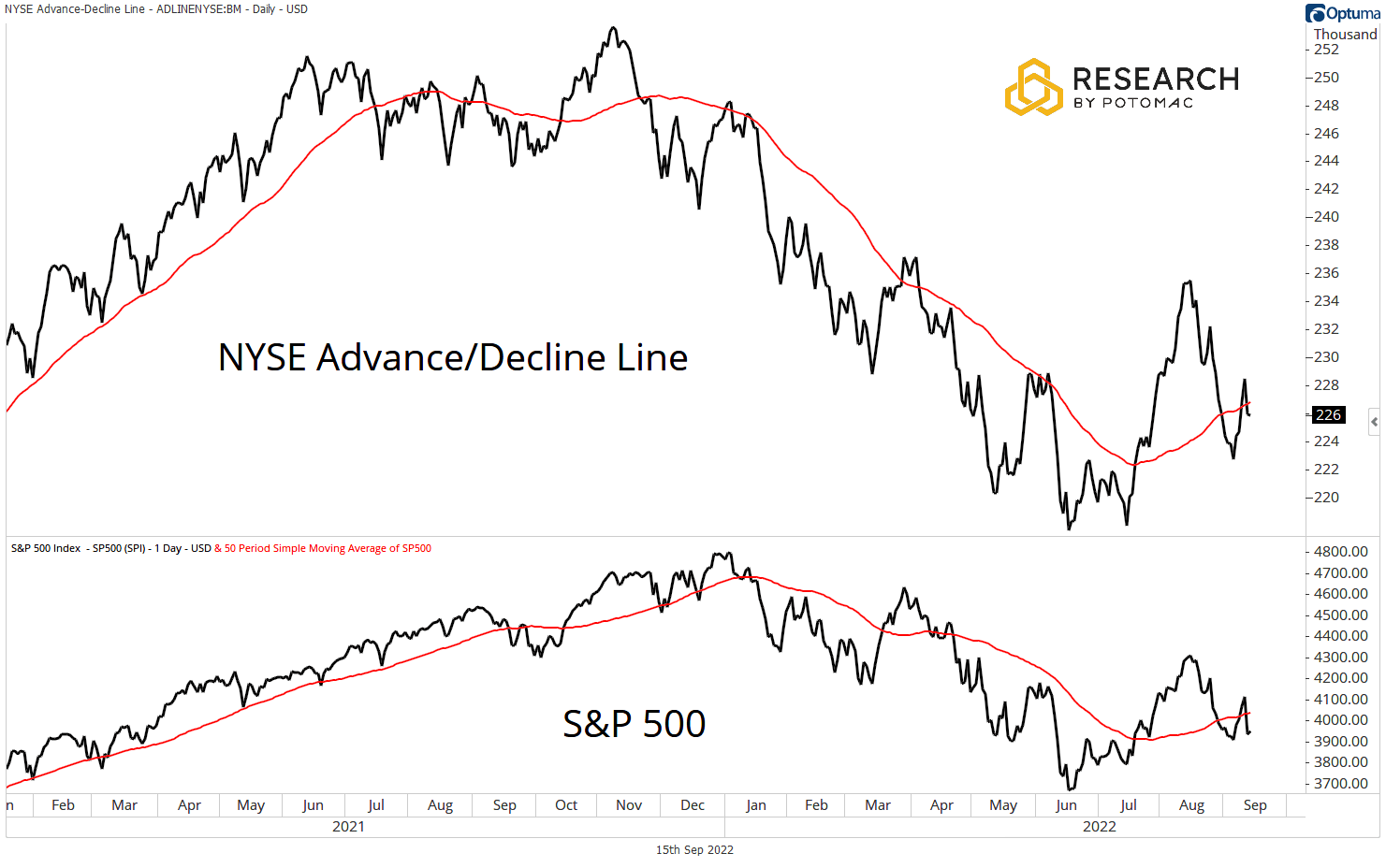
The five-day moving averages of issues on the NYSE making new 52-week and six-month lows have continued to move lower over the past week. Bulls want to see this trend continue and ultimately make a lower low relative to June should weaknesses in the market drive stocks to their June lows.
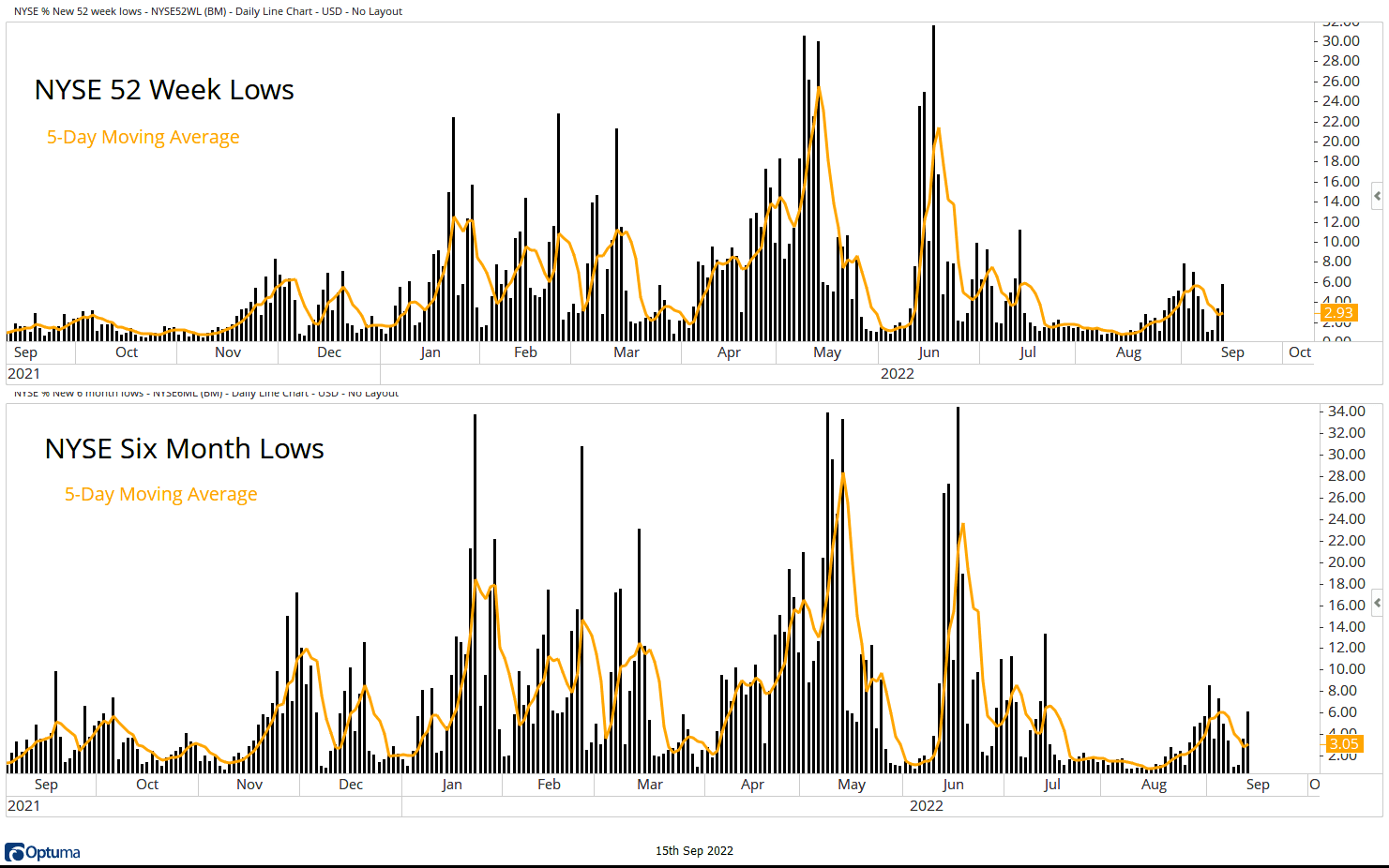
The five-day moving averages of stocks on the NYSE making new six-month and 52-week highs have seen an uptick over the past week. Both metrics remain at depressed levels, which needs to change if we make a stronger bullish case.
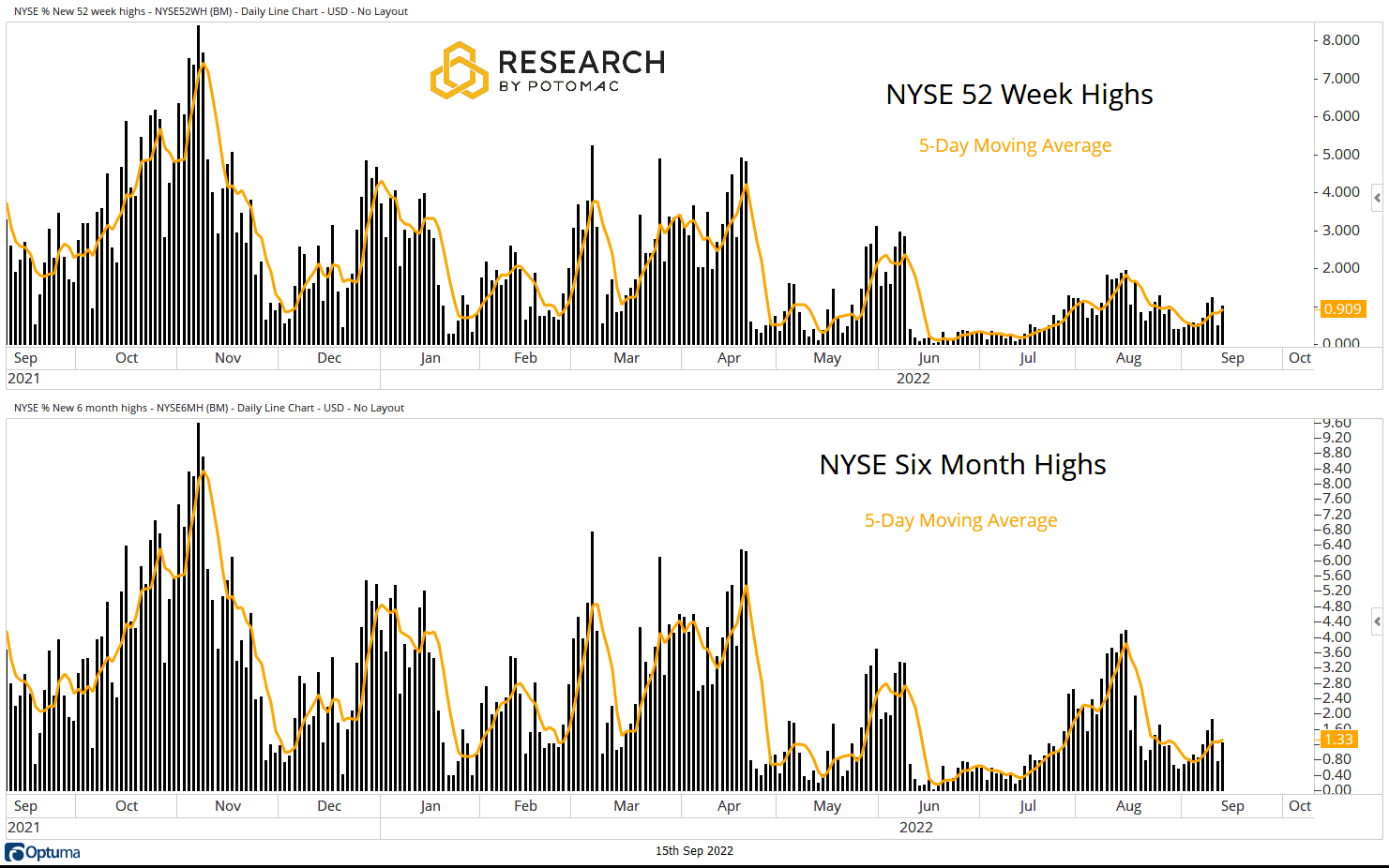
The percentage of NYSE issues trading above their respective 200-day moving averages moved to 22% this week, up from 21%. The S&P 500 remains below its 200-day moving average. The bears still control the long-term trend.
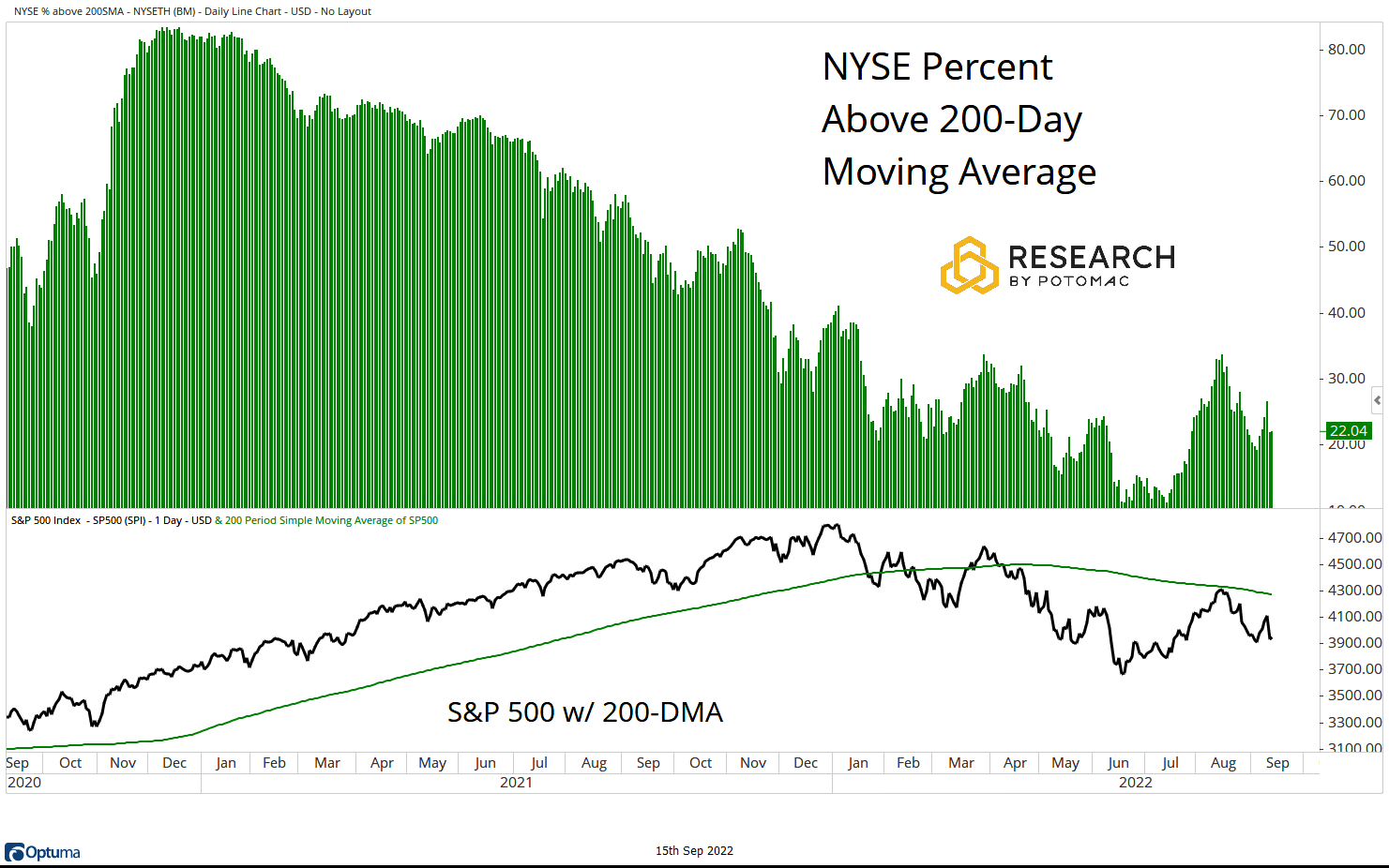
The percentage of NYSE issues trading above their respective 50-day moving averages moved to 35% from 47% last week. The S&P 500 is below its 50-day moving average.
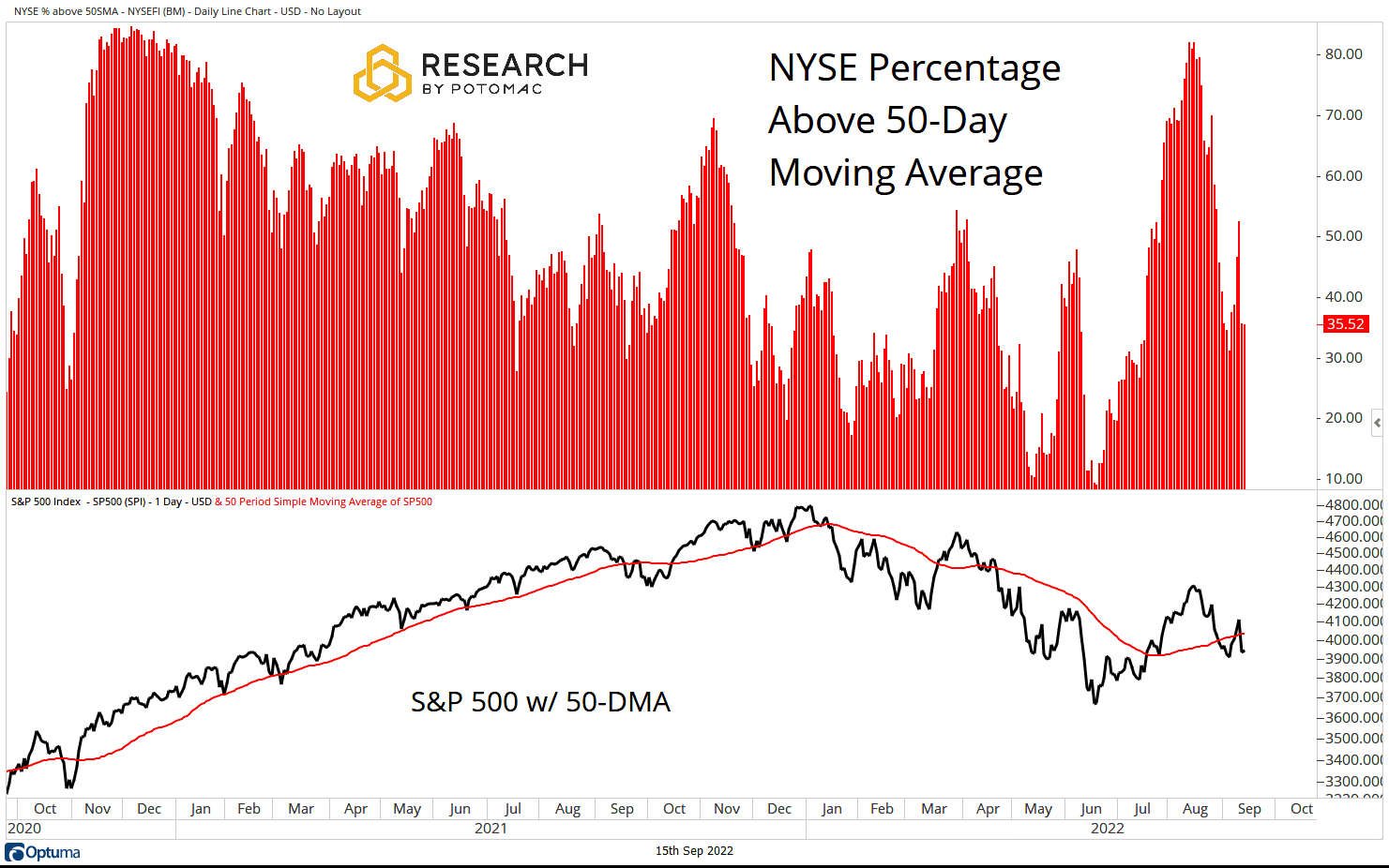
The percentage of issues on the NYSE trading above their respective 20-day moving averages rose to 28% this week from 17% last week. The S&P 500 closed below its 20-day moving average.
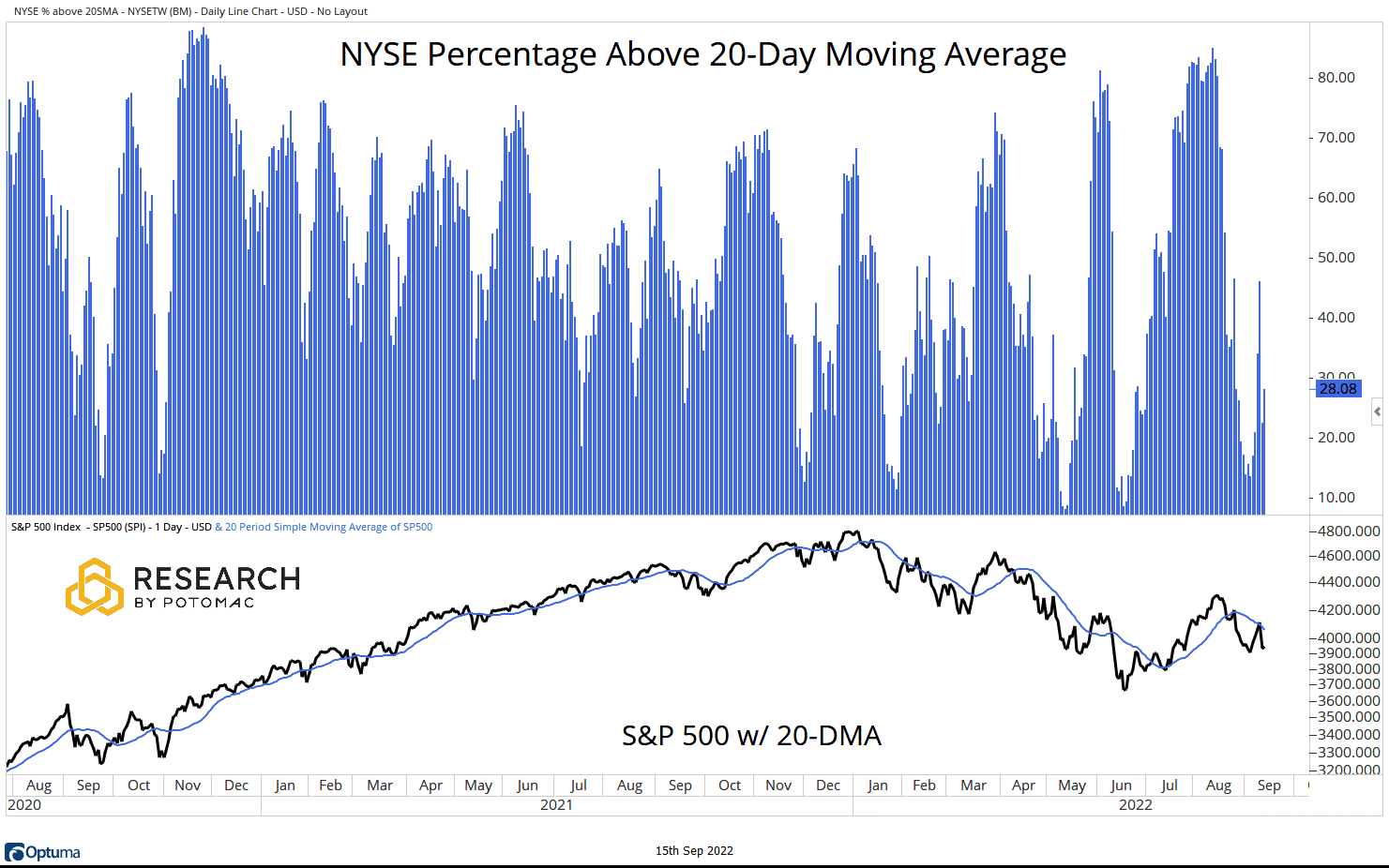
S&P 500 Breadth
Breadth metrics for the S&P 500 were mixed on the week.
- Advance/Decline Line: Above the 50-day moving average.
- Percent Above Their 200-Day Moving Average: 29% from 31% last week.
- Percent Above Their 50-Day Moving Average: 35% from 47% last week.
- Percent Above Their 20-Day Moving Average: 22% from 15% last week.
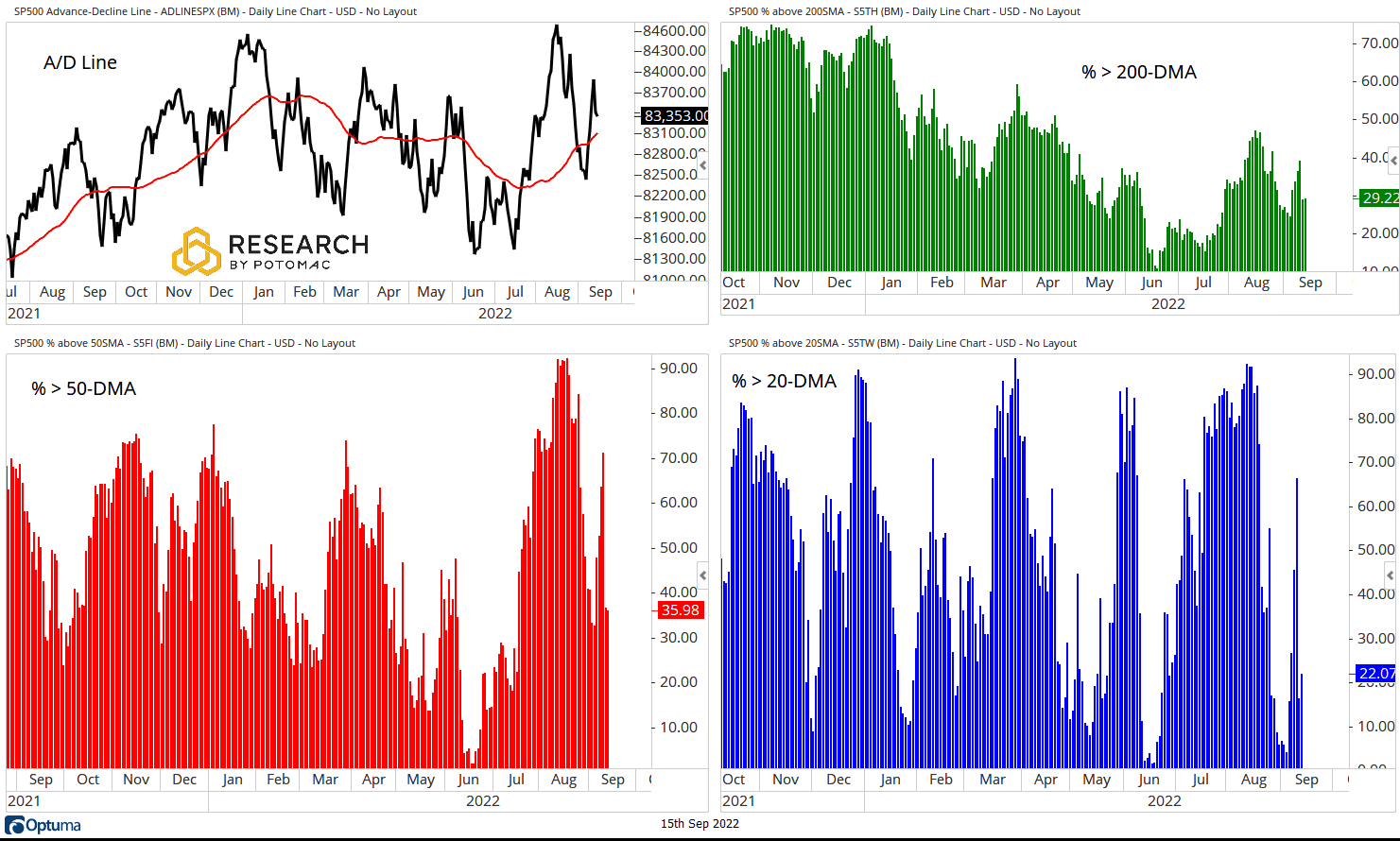
Small Cap Breadth
Breadth metrics for the S&P 600 Small Cap Index were mostly weaker this week.
- Advance/Decline Line: Below the 50-day moving average.
- Percent Above Their 200-Day Moving Average: 24% from 23% last week.
- Percent Above Their 50-Day Moving Average: 24% from 30% last week.
- Percent Above Their 20-Day Moving Average: 15% from 6% last week.
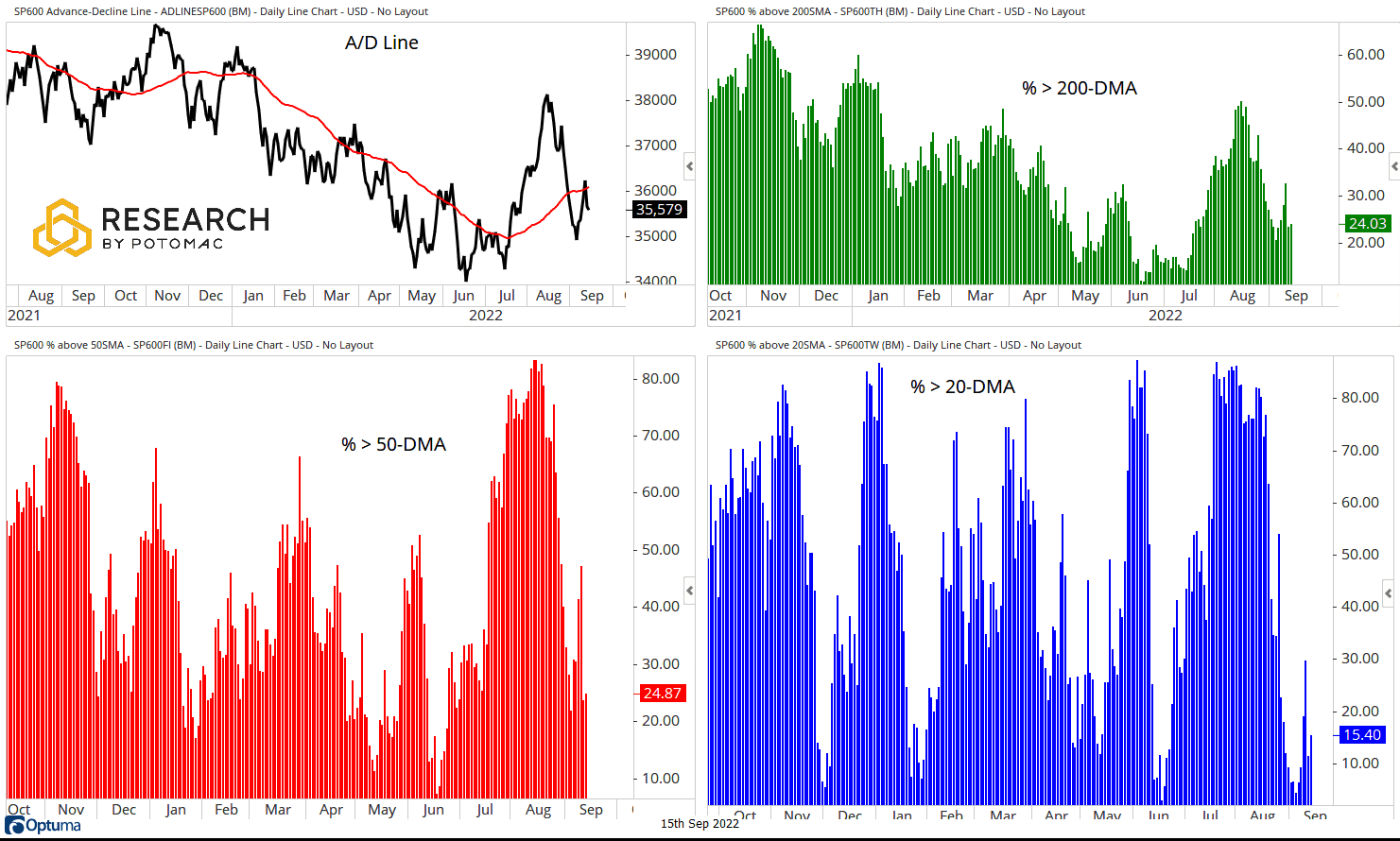
NASDAQ 100 Breadth
Breadth metrics for the NASDAQ 100 have mostly weakened this week.
- Advance/Decline Line: Below the 50-day moving average.
- Percent Above Their 200-Day Moving Average: 21% from 22% last week.
- Percent Above Their 50-Day Moving Average: 23% from 36% last week.
- Percent Above Their 20-Day Moving Average: 18% from 14% last week.
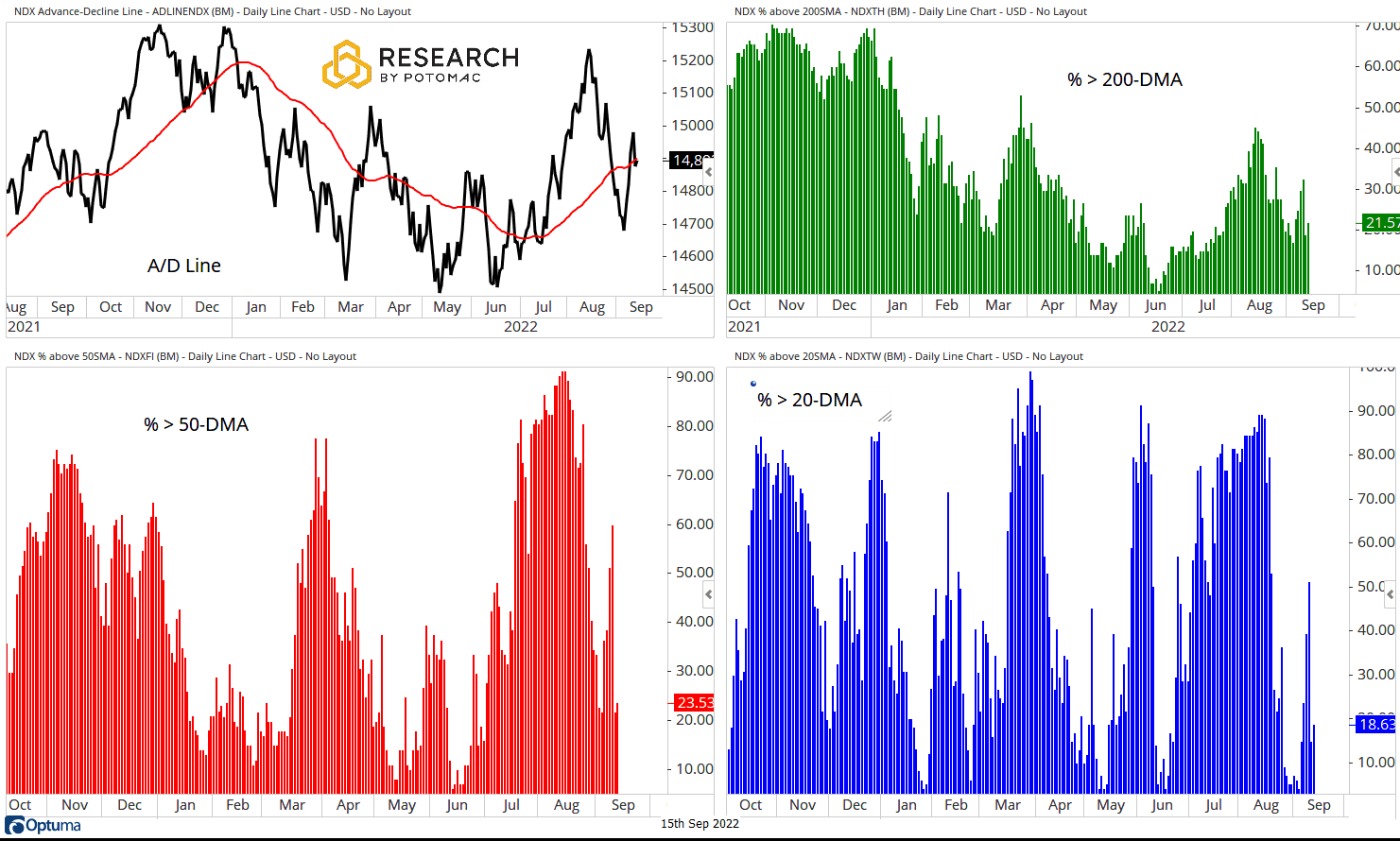
Potomac Fund Management ("Company") is an SEC-registered investment adviser. SEC registration does not constitute an endorsement of the advisory firm by the SEC nor does it indicate that the advisory firm has attained a particular level of skill or ability. This information is prepared for general information only and should not be considered as individual investment advice nor as a solicitation to buy or offer to sell any securities. This material does not constitute any representation as to the suitability or appropriateness of any investment advisory program or security. Please visit our FULL DISCLOSURE page. The company does not make any representations or warranties as to the accuracy, timeliness, suitability, completeness, or relevance of any information prepared by any unaffiliated third party, whether linked to the Company website or incorporated herein, and takes no responsibility for any of this information. The views of the Company are subject to change and the Company is under no obligation to notify you of any changes. Different types of investments involve varying degrees of risk, and there can be no assurance that the future performance of any specific investment or investment strategy will be profitable or equal to any historical performance level.
